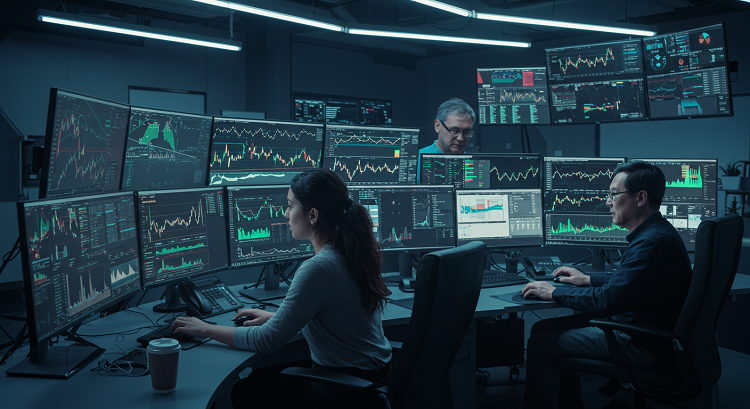Cryptocurrency trading is highly volatile, making it essential for traders to use technical indicators to analyze market trends and make informed decisions. Technical indicators help traders identify potential entry and exit points, predict price movements, and manage risk effectively. By combining different indicators, traders can develop robust strategies that enhance their chances of profitability. This article explores the most commonly used technical indicators in crypto trading and how to apply them effectively.
Table of Contents
Understanding Technical Indicators
Technical indicators are mathematical calculations based on historical price, volume, and open interest data. These indicators help traders understand market trends and price movements. They can be broadly classified into trend indicators, momentum indicators, volatility indicators, and volume indicators.
Trend Indicators
Trend indicators help traders determine the direction of the market and identify potential reversals.
Moving Averages (MA)
Moving Averages smooth out price fluctuations and help identify trends. The two most commonly used types are:
- Simple Moving Average (SMA): Averages past closing prices over a specified period.
- Exponential Moving Average (EMA): Gives more weight to recent prices, making it more responsive to price changes.
Traders use crossovers between short-term and long-term MAs to identify buy and sell signals.
Moving Average Convergence Divergence (MACD)
MACD consists of two moving averages and a histogram that indicates trend strength. A bullish signal occurs when the MACD line crosses above the signal line, while a bearish signal occurs when it crosses below.
Momentum Indicators
Momentum indicators measure the speed of price movements and help traders identify overbought or oversold conditions.
Relative Strength Index (RSI)
RSI ranges from 0 to 100 and is used to determine whether an asset is overbought (above 70) or oversold (below 30). Traders use RSI to anticipate potential reversals and confirm trend strength.
Stochastic Oscillator
Similar to RSI, the stochastic oscillator measures price momentum. It compares a cryptocurrency’s closing price to its price range over a specific period. A reading above 80 suggests overbought conditions, while a reading below 20 indicates oversold conditions.
Volatility Indicators
Volatility indicators help traders measure the intensity of price fluctuations.
Bollinger Bands
Bollinger Bands consist of a middle moving average line and two outer bands that expand and contract based on market volatility. When the price moves near the upper band, it suggests overbought conditions, while movement near the lower band indicates oversold conditions.
Average True Range (ATR)
ATR measures market volatility by calculating the average range between the highest and lowest prices over a given period. Higher ATR values indicate increased volatility.
Volume Indicators
Volume indicators help traders understand the strength of a price movement.
On-Balance Volume (OBV)
OBV tracks the cumulative volume of buying and selling pressure. If OBV increases while price rises, it confirms an upward trend, whereas declining OBV with rising prices may indicate weakening momentum.
Chaikin Money Flow (CMF)
CMF measures buying and selling pressure over a set period. A positive CMF suggests accumulation, while a negative CMF indicates distribution.
Combining Technical Indicators
While using a single indicator can be helpful, combining multiple indicators provides stronger signals. For example:
- Using RSI with Bollinger Bands helps confirm overbought or oversold conditions.
- MACD combined with Moving Averages provides a more accurate trend analysis.
- Volume indicators like OBV can confirm trends identified by price-based indicators.
Conclusion
Technical indicators play a crucial role in crypto trading, allowing traders to analyze market trends, identify opportunities, and manage risk effectively. Understanding how to use trend, momentum, volatility, and volume indicators can significantly improve trading decisions. However, no single indicator is foolproof. Traders should combine multiple indicators, backtest strategies, and incorporate fundamental analysis for better results.
For those looking to refine their trading strategies, platforms like BrintexPro provide advanced tools and insights to help traders navigate the volatile crypto market successfully.
FAQs
What are technical indicators in crypto trading?
Technical indicators are mathematical calculations based on historical price and volume data that help traders predict price movements.
Which is the best technical indicator for crypto trading?
There is no single best indicator. Traders often use a combination of indicators like RSI, MACD, and Bollinger Bands to enhance their strategies.
How do moving averages help in trading?
Moving averages smooth out price fluctuations, helping traders identify trends and potential reversals.
What is the best time frame for using technical indicators?
The best time frame depends on the trading style. Day traders prefer short-term charts (1-15 minutes), while swing traders use daily or weekly charts.
Can I use multiple indicators together?
Yes, combining indicators can provide stronger signals and reduce false positives.
What is the difference between leading and lagging indicators?
Leading indicators predict future price movements, while lagging indicators confirm trends after they occur.
How reliable are technical indicators in crypto trading?
While technical indicators provide useful insights, they should not be relied on solely. Combining them with fundamental analysis improves accuracy.
What is divergence in technical analysis?
Divergence occurs when price moves in the opposite direction of an indicator, often signaling a potential reversal.
Are technical indicators useful for beginners?
Yes, technical indicators help beginners understand market trends and develop structured trading strategies.
Do professional traders use technical indicators?
Yes, professional traders use technical indicators along with other tools like fundamental analysis and market sentiment to make informed trading decisions.

